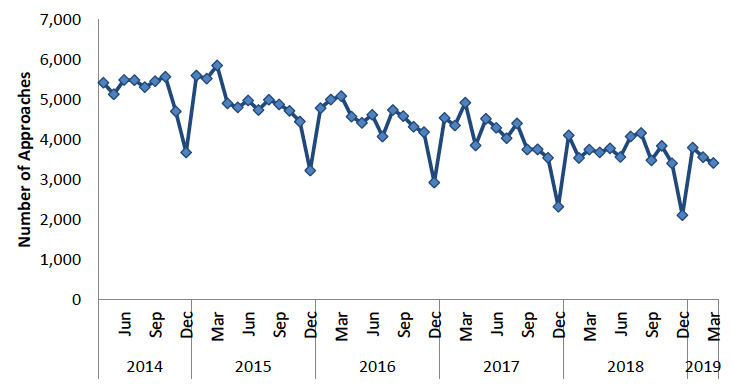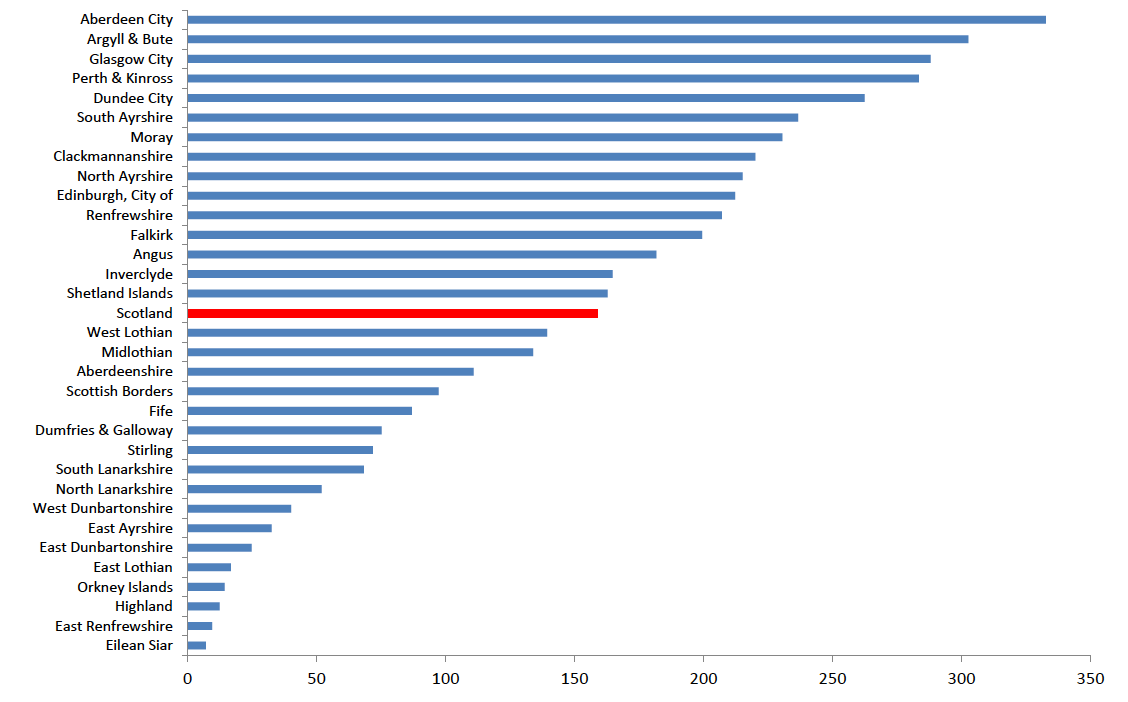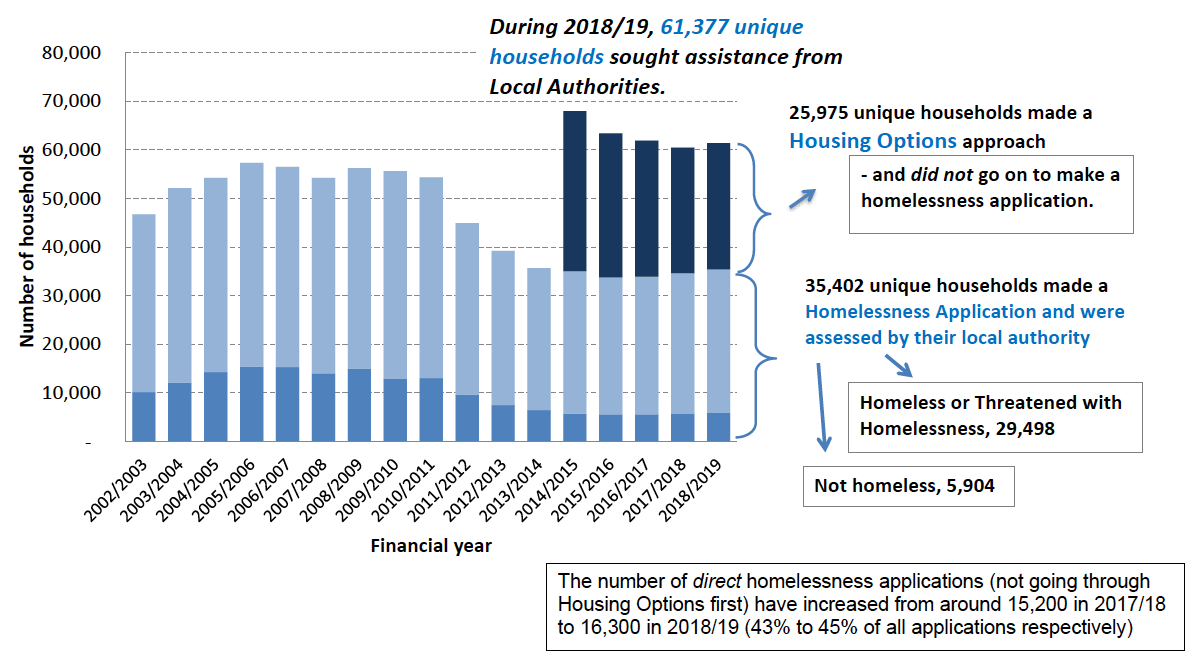Housing Options (Prevent 1) Statistics: 2018/19
Housing Options (PREVENT1) Statistics in Scotland to 31 March 2019
This document is part of a collection
Number of Approaches to Local Authorities
Since the PREVENT1 data collection began in April 2014, there have been 260,670 approaches recorded (see Table 1). During the financial year (2018/19) there were 42,850 approaches recorded, a reduction of 2,995 (-7%) compared to the previous year, and which continues the downward trend seen since 2014. Comparing 2018/19 to the first year (2014/15) data was collected for Housing Options, there has been a reduction of over 20,000 approaches (32%).
Chart 1 shows the number of new approaches per month. It is not known why there are sharp reductions in the number of approaches made during December each year, but this trend suggests an element of seasonal fluctuation in demand for Housing Options.
Chart 1: Number of New Approaches to Housing Options, 1 April 2014 to 31 March 2019

It is for local authorities to decide what constitutes an approach. This can lead to large differences in the volumes of approaches that are recorded. Chart 2 shows the number of approaches as a percentage of all households in each Local Authority for the period 1 April 2018 to 31 March 2019. This varies greatly amongst Local Authorities. For example, in Aberdeen City 3.3% of households within the local authority made a unique household approach to the Housing Options service. This is double the national average of 1.6% (Table 2).
Chart 2: Rates of Housing Options approaches per 10,000 households, 1 April 2018 to 31 March 2019

Housing Options has been developing in Local Authorities from around 2009 onwards, although the pace of implementation has varied by Local Authority.
In total, around 61,377 households made either a homelessness application or Housing Options approach during 2018/19, an increase of 1.6% from 60,418 during 2017/18.
Figure 1 shows that the number of unique households making a homelessness application has fallen from a peak of around 57,300 households in 2005/6 to around 33,700 in 2015/16. Since then it has gradually risen to 35,400 households in 2018/19.[5]
Not all households making a homelessness application are found to be homeless though. In 2018/19, of the 35,402 unique households making an application, 29,498 (83%) were found to be homeless. The proportion of those being assessed as homeless has increased by six percentage points (from 77%) since 2009/10, however the number assessed as homeless has decreased over the same period. It is therefore likely that, in addition to reducing the number of homelessness applications since 2009, the introduction of Housing Options has led to a greater proportion of homelessness applications being assessed as homeless and a reduction in lost contacts for those households going on to make a homelessness application[6].
Comparing 2018/19 and 2017/18 Housing Options statistics, the number of households who made an approach and did not go on to make a homelessness application has increased. Around 25,975 households made an approach and did not make a homelessness application in 2018/19, compared to around 25,800 in 2017/18, a slight increase of 0.8%.
The proportion of homelessness applications which were made directly (and did not go through Housing Options first) has increased over the last year, from 43% to 45% of all applications when comparing 2017/18 to 2018/19. This suggests why the number of Housing Options approaches has decreased over the last year, but the number of homelessness applications has slightly increased.[7]
Figure 1: Number of unique households making a local authority approach for housing or homelessness assistance, 2002/03 to 2018/19

Contact
Email: lee.bunce@gov.scot
There is a problem
Thanks for your feedback